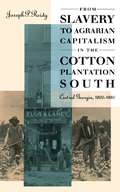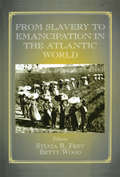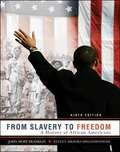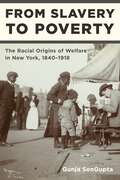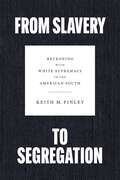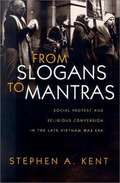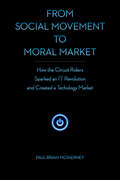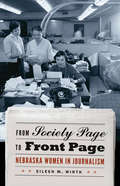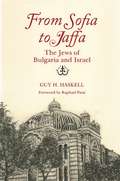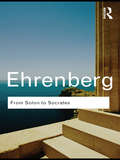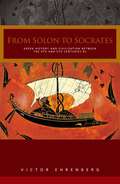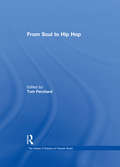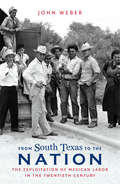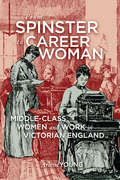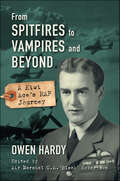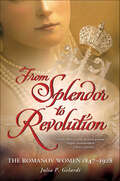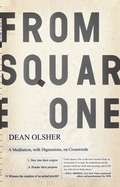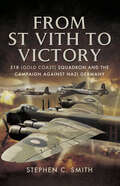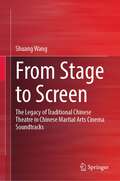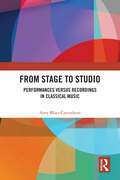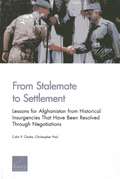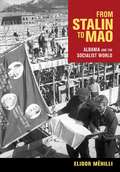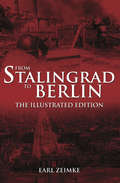- Table View
- List View
From Slavery to Agrarian Capitalism in the Cotton Plantation South
by Joseph P. ReidyReidy has produced one of the most thoughtful treatments to date of a critical moment in southern history, placing the social transformation of the South in the context of 'the age of capital' and the changes in the markets, ideologies, etc. of the Atlantic world system. Better than anyone perhaps, Reidy has elaborated both the large and small narratives of this development, connecting global forces with the initiatives and reactions of ordinary southerners, black and white.--Thomas C. Holt, University of Chicago "Joseph Reidy's detailed analysis of social and economic developments in central Georgia during and after slavery will take its place among the standard works on these subjects. Its discussions of the expansion of the cotton kingdom and of the changes after emancipation make it necessary reading for all concerned with southern and African-American history.--Stanley Engerman, University of Rochester "Successfully places the experience of one region's people into the larger theoretical context of world capitalist development and in the process challenges other scholars to do the same.--Rural Sociology
From Slavery to Aid
by Benedetta RossiFrom Slavery to Aid engages two major themes in African historiography, the slow death of slavery and the evolution of international development, and reveals their interrelation in the social history of the region of Ader in the Nigerien Sahel. Benedetta Rossi traces the historical transformations that turned a society where slavery was a fundamental institution into one governed by the goals and methods of 'aid'. Over an impressive sweep of time - from the pre-colonial power of the Caliphate of Sokoto to the aid-driven governments of the present - this study explores the problem that has remained the central conundrum throughout Ader's history: how workers could meet subsistence needs and employers fulfil recruitment requirements in an area where natural resources are constantly exposed to the climatic hazards characteristic of the edge of the Sahara.
From Slavery to Emancipation in the Atlantic World
by Betty Wood Sylvia R. FreyThis collection examines the effects of slavery and emancipation on race, class and gender in societies of the American South, the Caribbean, Latin America and West Africa. The contributors discuss what slavery has to teach us about patterns of adjustment and change, black identity and the extent to which enslaved peoples succeeded in creating a dynamic world of interaction between the Americas. They examine how emancipation was defined, how it affected attitudes towards slavery, patterns of labour usage and relationships between workers as well as between workers and their former owners.
From Slavery to Freedom: A History of African Americans
by John Hope Franklin Evelyn Brooks-HigginbothamFrom Slavery to Freedom remains the most revered, respected, and honored text on the market. The preeminent history of African Americans, this best-selling text charts the journey of African Americans from their origins in Africa, through slavery in the Western Hemisphere, struggles for freedom in the West Indies, Latin America, and the United States, various migrations, and the continuing quest for racial equality. Building on John Hope Franklin's classic work, the ninth edition has been thoroughly rewritten by the award-winning scholar Evelyn Brooks Higginbotham. It includes new chapters and updated information based on the most current scholarship. With a new narrative that brings intellectual depth and fresh insight to a rich array of topics, the text features greater coverage of ancestral Africa, African American women, differing expressions of protest, local community activism, black internationalism, civil rights and black power, as well as the election of our first African American president in 2008.
From Slavery to Poverty: The Racial Origins of Welfare in New York, 1840-1918
by Gunja SenGuptaThe racially charged stereotype of "welfare queen"—an allegedly promiscuous waster who uses her children as meal tickets funded by tax-payers—is a familiar icon in modern America, but as Gunja SenGupta reveals in From Slavery to Poverty, her historical roots run deep. For, SenGupta argues, the language and institutions of poor relief and reform have historically served as forums for inventing and negotiating identity.Mining a broad array of sources on nineteenth-century New York City’s interlocking network of private benevolence and municipal relief, SenGupta shows that these institutions promoted a racialized definition of poverty and citizenship. But they also offered a framework within which working poor New Yorkers—recently freed slaves and disfranchised free blacks, Afro-Caribbean sojourners and Irish immigrants, sex workers and unemployed laborers, and mothers and children—could challenge stereotypes and offer alternative visions of community. Thus, SenGupta argues, long before the advent of the twentieth-century welfare state, the discourse of welfare in its nineteenth-century incarnation created a space to talk about community, race, and nation; about what it meant to be “American,” who belonged, and who did not. Her work provides historical context for understanding why today the notion of "welfare"—with all its derogatory “un-American” connotations—is associated not with middle-class entitlements like Social Security and Medicare, but rather with programs targeted at the poor, which are wrongly assumed to benefit primarily urban African Americans.
From Slavery to Segregation: Reckoning with White Supremacy in the American South
by Keith M. FinleyKeith M. Finley’s From Slavery to Segregation explores the key features shaping southern politics during the nineteenth and twentieth centuries as explained in the South’s defense of its racial systems. It treats slavery and segregation as part of the same whole rather than as discrete institutions rooted in different periods. In the process, the book uncovers the deep historical origins of the region’s states’ rights philosophy and the unfortunate persistence of a culture dominated by calls for white supremacy. While highlighting the broad overview of southern racial and political thought, Finley underscores the larger American struggle with racial injustice, which, although most pronounced in the South, afflicted the entire nation. The South’s defense of chattel slavery became a natural model for the region’s defense of segregation during the Jim Crow era. Through a comparative analysis of the rhetoric employed in the justification of both racial institutions, Finley reveals elements of continuity and change in the region’s identity. Ultimately, he shows how the history of the twentieth-century South is irreparably linked to the century before it. For instance, one cannot understand the ferocity of resistance to the Supreme Court’s 1954 Brown v. Board decision without being aware of how and why the South emerged as it did after the Civil War. The Old South and the New South shared a similar constellation of ideas that informed arguments advancing their respective race-based social orders, which took the form of a commonality of perception regarding race, a sense of being assailed by outsiders, and a series of appeals to the highest secular authority in the pantheon of regional and American beliefs—the Constitution. Discontinuity, however, marked the long-term strategies of both the prewar and postwar South. Although segregationists sought to preserve the racial status quo as did their forebears, they ultimately relented when confronted with federal power and grudgingly shifted toward a narrative that less often foregrounded race when championing states’ rights.
From Slogans to Mantras: Social Protest and Religious Conversion In The Late Vietnam War Era
by Stephen A. KentThe author has sought out and interviewed many of the folks who first too part in politics and later in radical religious conversions during the sixties.
From Social Movement to Moral Market: How the Circuit Riders Sparked an IT Revolution and Created A Technology Market
by Paul-Brian McinerneyIn From Social Movement to Moral Market, Paul-Brian McInerney explores what happens when a movement of activists gives way to a market for entrepreneurs. This book explains the transition by tracing the brief and colorful history of the Circuit Riders, a group of activists who sought to lead nonprofits across the digital divide. In a single decade, this movement spawned a market for technology assistance providers, dedicated to serving nonprofit organizations. In contrast to the Circuit Riders' grassroots approach, which was rooted in their commitment to a cause, these consultancies sprung up as social enterprises, blending the values of the nonprofit sector with the economic principles of for-profit businesses. Through a historical-institutional analysis, this narrative shows how the values of a movement remain intact even as entrepreneurs displace activists. While the Circuit Riders serve as a rich core example in the book, McInerney's findings speak to similar processes in other "moral markets," such as organic food, exploring how the evolution from movement to market impacts activists and enterprises alike.
From Society Page to Front Page: Nebraska Women in Journalism
by Eileen WirthEileen M. Wirth never set out to be a groundbreaker for women in journalism, but if she wanted to report on social issues instead of society news, she had no alternative. Her years as one of the first women reporters at the Omaha World-Herald, covering gender barriers even as she broke a few herself, give Wirth an especially apt perspective on the women profiled in this book: those Nebraskans who, over a hundred years, challenged traditional feminine roles in journalism and subtly but surely changed the world.The book features remarkable women journalists who worked in every venue, from rural weeklies to TV. They fought for the vote, better working conditions for immigrants, and food safety at the turn of the century. They covered wars from the Russian Revolution to Vietnam. They were White House reporters and minority journalists who crusaded for civil rights. Though Willa Cather may be the only household name among them, all are memorable, their stories affording a firsthand look into the history of journalism and social change.
From Sofia to Jaffa: The Jews of Bulgaria and Israel (Raphael Patai Series in Jewish Folklore and Anthropology)
by Raphael Patai Guy H. HaskellWithin two years of the establishment of the State of Israel in 1948, an astounding 45,000 of Bulgaria's 50,000 Jews left voluntarily for Israel. This mass exodus was remarkable considering that Bulgaria was the only Axis power to prevent the deportation of its Jews to the death camps during World War II. After their arrival in Israel, the Jews of Bulgaria were recognized as a model immigrant group in a fledgling state attempting to absorb hundreds of thousands of newcomers from more than eighty countries. They became known for their independence, self-reliance, honesty, and hard work. <P><P> From Sofia to Jaffa chronicles the fascinating saga of a population relocated, a story that has not been told until now. Beginning with a study of the community in Bulgaria and the factors that motivated them to leave their homeland, this book documents the journey of the Bulgarian Jews to Israel and their adaptation to life there.
From Solon to Socrates: Greek History and Civilization During the 6th and 5th Centuries BC
by Victor EhrenbergFrom Solon to Socrates is a magisterial narrative introduction to what is generally regarded as the most important period of Greek history. Stressing the unity of Greek history and the centrality of Athens, Victor Ehrenberg covers a rich and diverse range of political, economic, military and cultural issues in the Greek world, from the early history of the Greeks, including early Sparta and the wars with Persia, to the ascendancy of Athens and the Peloponnesian War.
From Solon to Socrates: Greek History and Civilization During the 6th and 5th Centuries BC (Routledge Classics Ser.)
by V. EhrenbergFirst published in 1973. Routledge is an imprint of Taylor & Francis, an informa company.
From Soul to Hip Hop (The\library Of Essays On Popular Music Ser.)
by Tom PerchardThe essays contained in this volume address some of the most visible, durable and influential of African American musical styles as they developed from the mid-1960s into the 21st-century. Soul, funk, pop, R&B and hip hop practices are explored both singly and in their many convergences, and in writings that have often become regarded as landmarks in black musical scholarship. These works employ a wide range of methodologies, and taken together they show the themes and concerns of academic black musical study developing over three decades. While much of the writing here is focused on music and musicians in the United States, the book also documents important and emergent trends in the study of these styles as they have spread across the world. The volume maintains the original publication format and pagination of each essay, making for easy and accurate cross-reference and citation. Tom Perchards introduction gives a detailed overview of the book‘s contents, and of the field as a whole, situating the present essays in a longer and wider tradition of African American music studies. In bringing together and contextualising works that are always valuable but sometimes difficult to access, the volume forms an excellent introductory resource for university music students and researchers.
From South Texas to the Nation: The Exploitation of Mexican Labor in the Twentieth Century (The David J. Weber Series in the New Borderlands History)
by John WeberIn the early years of the twentieth century, newcomer farmers and migrant Mexicans forged a new world in South Texas. In just a decade, this vast region, previously considered too isolated and desolate for large-scale agriculture, became one of the United States' most lucrative farming regions and one of its worst places to work. By encouraging mass migration from Mexico, paying low wages, selectively enforcing immigration restrictions, toppling older political arrangements, and periodically immobilizing the workforce, growers created a system of labor controls unique in its levels of exploitation.Ethnic Mexican residents of South Texas fought back by organizing and by leaving, migrating to destinations around the United States where employers eagerly hired them--and continued to exploit them. In From South Texas to the Nation, John Weber reinterprets the United States' record on human and labor rights. This important book illuminates the way in which South Texas pioneered the low-wage, insecure, migration-dependent labor system on which so many industries continue to depend.
From Spinster to Career Woman: Middle-Class Women and Work in Victorian England
by Arlene YoungThe late Victorian period brought a radical change in cultural attitudes toward middle-class women and work. Anxiety over the growing disproportion between women and men in the population, combined with an awakening desire among young women for personal and financial freedom, led progressive thinkers to advocate for increased employment opportunities. The major stumbling block was the persistent conviction that middle-class women - "ladies" - could not work without relinquishing their social status. Through media reports, public lectures, and fictional portrayals of working women, From Spinster to Career Woman traces advocates' efforts to alter cultural perceptions of women, work, class, and the ideals of womanhood. Focusing on the archetypal figures of the hospital nurse and the typewriter, Arlene Young analyzes the strategies used to transform a job perceived as menial into a respected profession and to represent office work as progressive employment for educated women. This book goes beyond a standard examination of historical, social, and political realities, delving into the intense human elements of a cultural shift and the hopes and fears of young women seeking independence. Providing new insights into the Victorian period, From Spinster to Career Woman captures the voices of ordinary women caught up in the frustrations and excitements of a new era.
From Spitfires to Vampires and Beyond: A Kiwi Ace's RAF Journey
by Owen HardyWorld War Two Spitfire pilot Owen Hardy was probably the last New Zealand ace to tell his story. He left home at 18 bent on joining the RAF and by 1942, aged only 20, he was at Biggin Hill with 72 Squadron under Brian Kingcome. D-Day found him flying over the Normandy beaches with 485 (New Zealand) Squadron. That he survived the war unharmed owed as much to luck as it did to his ability as a fighter pilot. Unable to settle in civilian life afterwards in New Zealand, he returned to the RAF for the second phase of a remarkable career. Converting to jets, Hardy went on to command 71 Squadron, leading a Vampire aerobatic team with considerable success across Europe – dodging MiGs at the same time! But adapting to peacetime service wasn’t easy. Previously stimulated by the wartime environment and still passionate about flying, he was less enamored with staff jobs; and this despite working on the introduction of a new, state-of-the-art missile system, Bloodhound. Then a fateful decision, to turn down command of a Javelin squadron and follow his mentor, led finally to disillusionment. Hardy pulls no punches in this forthright and refreshingly honest autobiography. In retelling his eye-opening story, editor Black Robertson shines a light on what it was like not just to fly in combat, but also on the changing face of a post-war RAF which arguably undervalued some of its heroes. From the heat of North Africa to the uncertainties of the Cold War, it’s a unique and enthralling tale.
From Splendor to Revolution: The Romanov Women 1847–1928
by Julia P. Gelardi“A richly detailed portrait of four women, whom marriage and blood put at the center of European history.” —Richmond Times-DispatchThis sweeping saga recreates the extraordinary opulence and violence of Tsarist Russia as the shadow of revolution fell over the land and destroyed a way of life for these Imperial women.From the early 1850s until the late 1920s Russia underwent a massive transformation, taking it from days of grandeur under the tsars to the chaos of revolution and the beginnings of the Soviet Union.At the center of all this tumult were four Romanov women. Marie Alexandrovna, Tsar Alexander II’s pampered daughter, astonished her mother-in-law, Queen Victoria, with her strength of character. Thrust into the role of queen at sixteen, Olga Constantinovna’s altruistic streak benefited Greeks and Russians alike. Charming and vivacious, Marie Feodorovna, the mother of the ill-fated Tsar Nicholas II, excelled in her role as empress. Formidable and ambitious, Marie Pavlovna emerged as a rival to Tsarina Alexandra, Nicholas II’s embattled consort.From Splendor to Revolution presents the unforgettable political and personal dramas of these extraordinary women. What began for them as a time of splendor ended after World War I, with a Russia destroyed by revolution.“Relating the drama and tragedy of royal life, Gelardi ably weaves in the extended family ties that connected most European rulers, including Queen Victoria.” —Publishers Weekly (starred review)“Simple, straightforward, and engaging. Gelardi is proof that history written from the female perspective can be all business.” —The Roanoke Times
From Square One
by Dean OlsherFrom Square One is Dean Olsher's captivating and in-depth exploration of the cultural history, psychology, and even metaphysics of crosswords -- their promise of a world without chaos and uncertainty. It is often repeated that more than 50 million Americans do crossword puzzles on a regular basis. Skeptical of that claim, Dean Olsher does his own research and finds that the number is nearly dead-on. Filled with lively, original reporting, From Square One disputes the widely held belief that solving crosswords helps prevent Alzheimer's; in fact, the drive to fill in empty spaces is more likely a mental illness than a cure. While "puzzle addiction" is usually meant as a lighthearted metaphor, the term contains more than a nugget of truth. Olsher looks into the origins and traditions of this popular pastime, which made its debut in a New York newspaper in 1913. Or did it? Along the way, he takes readers inside the making of a crossword. He also revives the quest of musical-theater legend and puzzle constructor Stephen Sondheim to find an American audience for a British crossword style that demands a love of verbal playfulness over knowledge of arcane trivia. Informative, engaging, and often surprising, From Square One is a unique and enjoyable read for puzzlers and nonpuzzlers alike.
From St Vith to Victory: 218 (Gold Coast) Squadron and the Campaign Against Nazi Germany
by Stephen C. SmithCompiled from a variety of sources and first-hand accounts, this book is an authoritative record of the part played by No.218 (Gold Coast) Squadron during the bomber offensives of World War II. The squadron's activities are described in detail offering a unique insight into the lives of those involved and saluting the important role that No.3 Group and No.218 Squadron played in Bomber Command's ultimate victory.No.218 Squadron was formed a few months before the Armistice which brought to a conclusion the Great War. Disbandment soon followed, rendering the squadron number plate dormant until the rise of National Socialism in Germany. The squadron was reformed in 1936 and spent the remaining peace time years honing its skills, skills that would be tested from the very first day of the bomber offensive against Germany to the very last.
From Stage to Screen: The Legacy of Traditional Chinese Theatre in Chinese Martial Arts Cinema Soundtracks
by Shuang WangChinese martial arts cinema is held to be a synthesis drawing on artistic conventions of traditional Chinese theatre. Film sound and music perform as the legitimate heirs of some of the aesthetic ideas and norms of traditional Chinese theatre. This book critically examines the history of this under-explored field of inquiry from a theoretically comparative perspective, demonstrating that the musical codes drawn from traditional theatre are a constantly changing component integral to Chinese martial arts cinema. It explores the interaction between traditional Chinese theatre and Chinese martial arts cinema in how the musical codes of the former have shaped the aesthetics of the latter uniquely. This departs from conventional existing studies that focus on “adaptation.” The book’s historical and theoretical approach connects film, theatre and music, and re-defines the status of distinctive domains of filmic expression, grounding theatre as the pivot – or “hinge” – of film aesthetics. The book proffers this unique angle of research to rethink and re-imagine film sound and audiovisual synchronisation. Primarily intended for scholars in Chinese cinema, film music, Chinese theatre and visual culture, this monograph also presents introductory and comprehensive material for undergraduate and graduate-level courses in film and media studies, film music, Chinese cinema, and Chinese theatre.
From Stage to Studio: Performances versus Recordings in Classical Music (Routledge Research in Music)
by Amy Blier-CarruthersFrom Stage to Studio: Performances versus Recordings in Classical Music presents a cultural study of classical music-making through the analysis of live and studio performances of orchestral and operatic repertoire conducted by Sir Charles Mackerras.The close listening analysis is based on detailed research into Mackerras’s private collection of over 600 reel-to-reel and cassette tapes containing recordings of over 1,000 live performances which he conducted between the 1950s and the late 1990s. This is contextualized with evidence collected during ethnographic fieldwork observations, presenting the opinions of Sir Charles, orchestral musicians from major London orchestras and opera houses with whom he was working with during the first decade of the twenty-first century (Philharmonia, Orchestra of the Age of Enlightenment, Royal Opera House, English National Opera), and production team members working for recording industry leaders (such as Decca, EMI, and Chandos). This ethnography of classical music-making gives a voice to performers and music professionals, brings to light some important and heretofore hidden issues, and explores a fascinating time of intense change in the recording industry.Including consideration of ways forward for performance, education, and recording, this book is relevant to specialist practitioners, as well as music enthusiasts interested in concert life and recording studio habits, professional performers, recordists, music students, educators, and scholars interested in classical music.
From Stalemate to Settlement: Lessons for Afghanistan from Historical Insurgencies That Have Been Resolved Through Negotiations
by Christopher Paul Colin P. ClarkeA comprehensive review of historical insurgencies that ended in settlement after a military stalemate shows that these negotiations followed a similar path that can be generalized into a "master narrative" of seven steps executed in a common sequence. Such a narrative could help guide and assess the progress of a similar approach to resolving the conflict in Afghanistan as U. S. forces prepare to withdraw.
From Stalemate to Settlement: Lessons for Afghanistan from Historical Insurgencies That Have Been Resolved Through Negotiations
by Christopher Paul Colin P. ClarkeA comprehensive review of historical insurgencies that ended in settlement after a military stalemate shows that these negotiations followed a similar path that can be generalized into a "master narrative" of seven steps executed in a common sequence. Such a narrative could help guide and assess the progress of a similar approach to resolving the conflict in Afghanistan as U. S. forces prepare to withdraw.
From Stalin to Mao: Albania and the Socialist World
by Elidor MëhilliElidor Mëhilli has produced a groundbreaking history of communist Albania that illuminates one of Europe’s longest but least understood dictatorships. From Stalin to Mao, which is informed throughout by Mëhilli’s unprecedented access to previously restricted archives, captures the powerful globalism of post-1945 socialism, as well as the unintended consequences of cross-border exchanges from the Mediterranean to East Asia. After a decade of vigorous borrowing from the Soviet Union—advisers, factories, school textbooks, urban plans—Albania’s party clique switched allegiance to China during the 1960s Sino-Soviet conflict, seeing in Mao’s patronage an opportunity to keep Stalinism alive. Mëhilli shows how socialism created a shared transnational material and mental culture—still evident today around Eurasia—but it failed to generate political unity. Combining an analysis of ideology with a sharp sense of geopolitics, he brings into view Fascist Italy’s involvement in Albania, then explores the country’s Eastern bloc entanglements, the profound fascination with the Soviets, and the contradictions of the dramatic anti-Soviet turn. Richly illustrated with never-before-published photographs, From Stalin to Mao draws on a wealth of Albanian, Russian, German, British, Italian, Czech, and American archival sources, in addition to fiction, interviews, and memoirs. Mëhilli’s fresh perspective on the Soviet-Chinese battle for the soul of revolution in the global Cold War also illuminates the paradoxes of state planning in the twentieth century.
From Stalingrad to Berlin: The Illustrated Edition
by Earl ZeimkeWith scarcely an interlude, the German-Soviet conflict in World War II lasted for 3 years, 10 months, and 16 days. The conflict seesawed across eastern and central Europe between the Elbe and the Volga, the Alps, and the Caucasus. The total number of troops continuously engaged averaged between 8 and 9 million, and the losses were appalling. Wehrmacht losses numbered between 3 and 3.5 million. Deaths on the Soviet side reached more than 12 million, about 47 percent of the grand total of soldiers of all nations killed in World War II. The war and the occupation cost theSoviet Union some 7 million civilians and Germany about 1.5 million. The losses, civilian and military, of Finland, the Baltic States, and eastern and southeastern European countries added millions more.The great struggle completely unhinged the traditional European balance of power. The war consolidated the Soviet regime in Russia, and enabled it to impose the Communist system on its neighbours, Finland excepted, and on the Soviet occupation zone in Germany. The victory made the Soviet Union the second-ranking world power.This book follows the conflict from Stalingrad to Berlin. Topics include strategy and tactics, partisan and psychological warfare, coalition warfare, and manpower and production problems faced by both countries, but by the Germans in particular.With a new introduction by Emmy AwardTM winning historian Bob Carruthers and numerous rare illustrations this powerful book makes for a welcome addition to any Second World War library.
